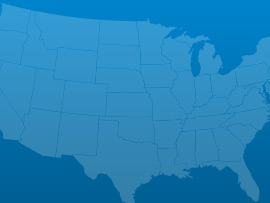MassDOT Highway Division is responsible for the oversight of more than 9,500 lane miles of roadway, 5,000 bridges, 65 lane miles of tunnels, and 1,500 traffic signals throughout the Commonwealth. Much of this infrastructure is approaching or has surpassed its useful life. In an effort to address the growing backlog of maintenance and reconstruction responsibilities, MassDOT Highway Division has aggressively pursued numerous alternative and accelerated project delivery methods. Overall, MassDOT has reduced the time between contract advertise - ment and construction start from 422 days in 2007 to 111 days in 2010, a 74 percent decrease. This reduction is more impressive when considered within the context of MassDOT’s annual road and bridge construc tion program which increased from $515 million in 2007 to more than $1 billion in 2010, a 46 percent increase in construction expenditures. Despite the increased allocation of roadway funding and MassDOT’s efficient utilization of these funds to expedite construc - tion, there are many unmet needs. Mass - DOT’s deferred maintenance backlog is growing rather than shrinking. Continued support for Chapter 90 is needed to ensure that local municipalities receive needed funding for roadway construction and main - tenance. Additionally, funding and support for a state infrastructure bank will better position the Commonwealth to receive and distribute monies needed to ensure that the roadway system within the Commonwealth remains in a state of good repair.
 Bridges
Bridges Dams
Dams Roads
Roads Transit
Transit Water and Wastewater
Water and WastewaterA: Exceptional, B: Good, C: Mediocre, D: Poor, F: Failing, ?: Incomplete
Each category was evaluated on the basis of capacity, condition, funding, future need, operation and maintenance, public safety, resilience, and innovation
Aviation
22 public-use airports
Bridges
487 of the 5,136 bridges are structurally deficient
Bridges
$182.70 million in bridge funds came from the Federal Highway Bridge Fund in 2011
Dams
293 high hazard dams
Dams
98% of the state regulated dams have an Emergency Action Plan
Drinking Water
$7.7 billion in drinking water infrastructure needs over the next 20 years
Energy
2.27 gigawatt-hours of renewable energy every year, ranking it 35th
Hazardous Waste
30 sites on the National Priorities List
Inland Waterways
90 miles of inland waterways, ranking it 35th nationally
Levees
69 miles of levees
Ports
17.3 million short tons of cargo in 2012, ranking it 29th nationally
Public Parks
$12.1 million of unmet needs for its parks system
Rail
11 freight railroads covering 896 miles across the state, ranking 41th nationally by mileage
Roads
7,340 of the state’s 36,330 public roads are major roads, and 19% are in poor condition
Roads
$2.3 billion a year in costs to motorists from driving on roads in need of repair, which is $478 /yr per motorist
Schools
$4.3 billion in estimated school infrastructure funding needs
Transit
383 million annual unlinked passenger trips via transit systems including bus, transit, and commuter trains
Wastewater
$8.0 billion in wastewater infrastructure needs over the next 20 years

March 03, 2017
As the President’s repeated in his address to Congress his pledge to dramatically increase infrastructure spending to the tune of $1 trillion, various Congressional Committees

March 01, 2017
On Tuesday night, President Trump addressed a joint-session of Congress for the first time in his presidency. Infrastructure was among the many issues he discussed.

February 28, 2017
U.S. motorists set a new record for vehicle miles travelled (VMT) in 2016, driving over 3.2 trillion miles, an increase of 70 billion miles from

February 17, 2017
Romantic dates, the Grammy awards and celebrating black history are not the only milestones of this week; the Oroville dam crisis in California and the